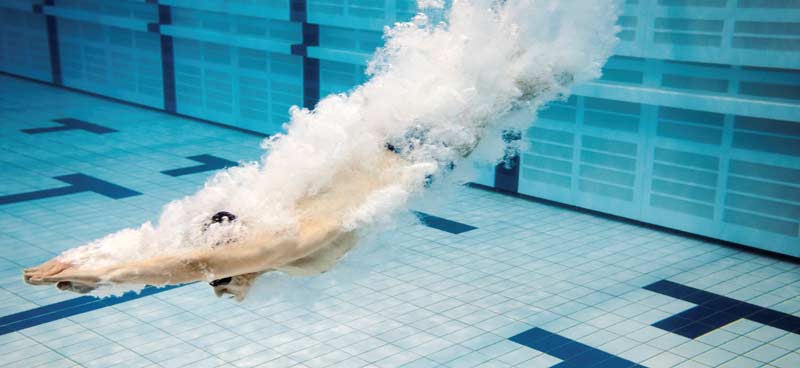
By Carl Valle
Anyone involved in athletics should know how performances improve systematically. I use “systematically” because sometimes a great performance will be attained without knowing why or having the ability to repeat the process. This article has two goals: modeling what it will take to improve the current world record and showing how coaches can develop better training programs using simple time and space. I have spent a year asking some direct questions and finding fewer answers and more questions in return. After several months of digging up details and historical data, I have a useful tool for others to follow.
Why Swimming Rather Than Track?
I was tempted to provide a more popular title and topic by discussing the 60m dash since most sport teams can relate to running more than swimming. The problem is that doing so would hurt coaches’ problem-solving skills by looking at something convenient instead of something that can challenge their thought processes. If one can model an event with the number of variables and complexity of swimming, easier and more straightforward options should be a breeze.
What Can Non-Swimming Coaches Expect?
My premise is simple: teach modeling of absolute performance in something more linear before proceeding to something more complex. If coaches learn how to problem-solve linear and closed sports, they can tackle the more chaotic team sports later. Program design is all about training, but few coaches model things to make their training more effective.
If coaches learn how to problem-solve linear and closed sports, they can tackle chaotic team sports later. Share on XSport, strength and conditioning, and high-performance coaches often fall into two categories. Many are stuck in an inbreeding syndrome of cultural dogma or thrown into the fire of an Olympic sport with little to offer team performance. So this article will be more of a middle-ground and vanilla plea to keep what works and adjust what needs to evolve. Coaches open and eager to innovate without being overly radical can use this article as a basic road map to outline modeling for their team or Olympic sport.
Modeling Is Secretly Re-Engineering Success
The direct approach to success is examining existing winning models and seeing their limitations, evolution, and contextual history. One also need not be sucked into my previous problem of being biased from “biography over biology” with mentors and heroes in sport. Everyone should be mentored or have a sounding board, but when mentorship leads to discipleship what makes someone great (unique) is not handed down and mistakes are copied. Rarely do we see assistants who try to mimic their mentors succeed without changing things based on their circumstances and talents. On the other hand, principles of training or important concepts are timeless, so efforts at trying to be cute often backfire.
Looking at world record history, my goal is to see what factors are unique to the individual and those that can be learned or trained for everyone. I also want to see if the coach is simply a pied piper with talent or creating something out of thin air. I believe that working with great talent makes you a better coach, not just making the less talented better. Talented athletes are teachers to coaches, and coaches have always learned from their protégés.
Finally, I’m looking at what is trending and what is becoming obsolete. An example of this is the swimming block start once thought to be abnormal and now commonplace. When Rowdy Gaines won his 100m gold medal in 1984 using his track start, he was an outlier. Now, any swimmer not using a track start is considered dated or overly stubborn.
Getting Started with Modeling for Performance
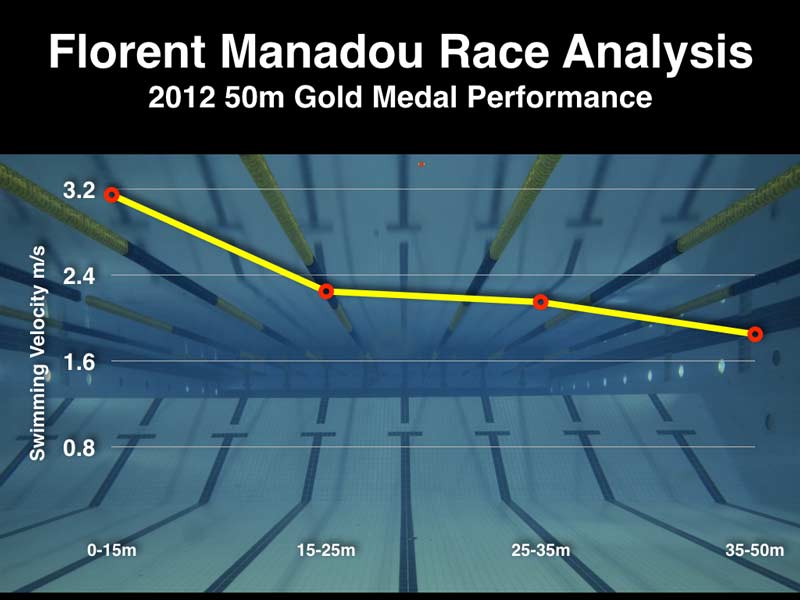
Figure 1. Swimming velocity modeling is the current standard in understanding performance. As coaches move away from splits to something more granular, expect further improvement in the sport.
Before one starts tinkering with ways to cut time, become more efficient, or add distance to a performance model, some foundational organization is needed. These four areas must be covered to establish a framework.
- Terminology – The first step in modeling is creating definitions and a working language to describe the problem or challenge. When no definitions exist, consider this is an invitation to innovate. When everyone is on the same page organizationally, progress becomes possible.
- Chronology – Logically, the event or performance must be outlined in the order in which things happen. Every movement and nuance should be annotated and recorded to develop a time sequence that is understandable and flows smoothly.
- Constraints – Factors that hamper the event or performance must be declared and defined with models as they can’t be adjusted. Many constraints are based on rules or constants like gravity or distance.
- Variables – Modeling variables are the hardest to define and tend to fall on the opposite spectrum of constraint-like factors. Variables are adjustable elements that can be tweaked and managed realistically. Most variables are teachable and trainable. Those that aren’t
are usually genetically driven, like an athlete’s talent.
Simply listing 3-5 elements per bullet point, you conclude that there is a lot of room for improvement in most sports. Much of the innovation is likely gone as a result of great minds pondering ways to get an advantage. But don’t lose hope—sport can still evolve.
Key Phases in the 50m Freestyle Long Course
The 50m freestyle has four phases: block start, dive, underwater transition, and the swim itself. Within each phase, sub-phases can be quantified and analyzed. I have used existing metrics to stay with legacy data and then added a few details and caveats for better perspective and stronger comparisons. The key point is that coaches need to look at events or sports and create specific milestones that are clear and impacted by training or teaching.
- Block start – The period when a swimmer is stationary on the starting platform through toe-off. During this phase, the goal is generating horizontal velocity with the right body position—one that maintains speed from an efficient entry.
- Dive – Limited from the pre-existing contributions of the block start phase, the strategy is using the momentum of the horizontal forces and transferring it to an effective underwater trajectory and the eventual swim.
- Underwater transition – From the moment the body is completely submerged to resurfacing is an opportunity to maintain the speed from the dive.
- Swim – The phase after breaking out of the underwater transition into full swimming and ending at the far wall. Most of the effort naturally is in improving swimming performance, and you need to focus on the less-developed areas.
Using Modeling to Find Opportunities for Improvement
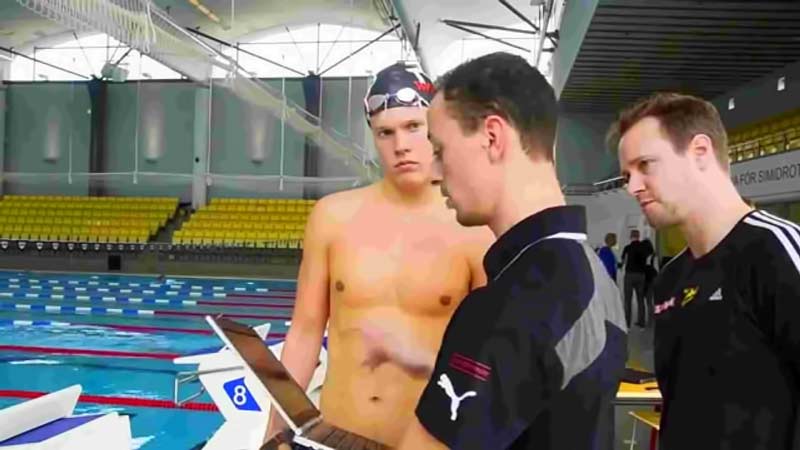
Figure 2. Companies like 1080 Motion are leading the charge in getting the right data and precise training for athletes looking for that meaningful change.
Opportunities for improvement involve looking at different areas of performance and asking what possible changes can be done to get a little benefit without using too many resources. I often tell my colleagues that most of us need to move away from out-coaching our counterparts to thinking about out-winning the competition. I sometimes lost against teams less prepared in sport but which saw the advantages of recruiting and program development. If you want to win and improve athlete performance you can’t just look at the research. You must study “winning coaches,” not just “great coaches.” If you are trying to improve performance you need to look for ways to get faster, not just areas to train or teach. Coaches are very egotistical sometimes, and the best approach is to try to have fun and allow athletes to compete better.
The next step after identifying the four phases is looking at the contributions of time and velocity to each one. Great research is already here on the history of the 50m and how athletes perform. When looking at the 50m and sprint/power events, think the three “E’s.”
- Effectiveness – Being effective is simply augmenting output. For example, maximal swimming speed is unknown, since—unlike track—blocks make the early part of the race the fastest. Swimmers gradually slow down because of fatigue. They can produce speeds over 2 meters per second from a dead start, and the key is to conserve the greatest amount of speed. Wired magazine made the critical mistake of using average speed as an oversimplified part of the race here, but I like the idea of what the author is modeling for swimming velocity.
- Efficiency – The need to perform at submaximal or maximal output with fewer body resources is the name of the game with physiological and biomechanical efficiency. The balance between efficiency and effectiveness is important because most events in sport favor who is first. The winner of the marathon is the athlete who runs the fastest, not who burns the most fat or stays below their lactate threshold. Efficiency should be thought as being lean with time and power, not simply anatomical and cellular adaptations. A common approach to performing faster is finding a pace that can be increased and maintained for the duration of the event.
- Execution – The final area where athletes need to tie everything together is race modeling, not to be confused with performance modeling. Race modeling looks at the athlete’s current abilities and maximizes what they have to create their best performance. Performance modeling should be thought of as improving the all-time maximal capability of the event, based on known and future variables. Many times athletes outperform better talents because they executed the race properly or more consistently. The goal for athletes and coaches is developing a strategy based on their talents and training, and being faithful and unswerving to the plan or tactics.
Innovating the Block Start Phase
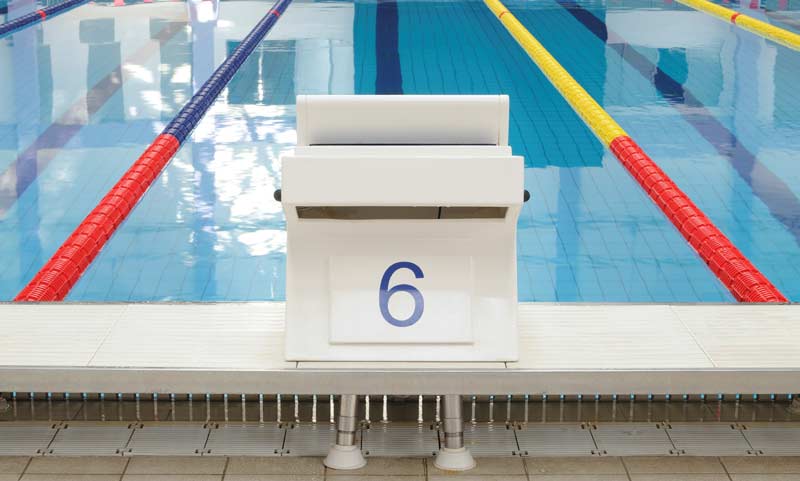
Figure 3. Neuromuscular power on the blocks have been tested with force plates for over a decade, and the key is finding the right balance of power and coordination.
There isn’t much room in swimming for innovating the start, as blocks leave few options besides trying to improve consistency—hence the commitment to the track start. If one was to summarize the needs analysis of the start, it’s a little more complicated than overcoming inertia but not as complicated as building a stealth fighter plane. Middle ground is setting up the swimmer’s body and total body starting strength to a modern Omega starting block.
Track coaches tend to oversimplify or overcomplicate block starts, so being more vanilla helps here. Swimming has some less concrete factors, such as the specs of the blocks and FINA rules. Like defining a catch in the NFL, some simple starting criteria in swimming are not clear. For example, using “reaction time” in research is wrong since many scientists use the total time from sound to takeoff to describe how quickly someone “reacts” to a sound/visual stimulus.
Also, a lot is going on within the time interval between responding to the sound of the start and pushing off. The entire body is coordinated into an orchestrated extension forward and slightly upward within half a second. Each joint and body segment is wonderfully coordinated as one functional unit, and they all have room to be adjusted for better performance.
A strength coach is tempted to add more strength or power for better blocks. But the influence would be small since many swimmers are already lifting legs and such increases of forces may not show up in departure speed. Teaching more starts with a finite amount of time and energy may not be ideal either, since fighting for .01 instead of .1 is always a math choice of needs versus wants.
Solution: The rear foot wedge and front foot being nearly vertical create a delay in propulsion because the shin angles are not parallel, as in track starts. A solution of adjusting the hip height and rear leg, along with the center of mass, can help reduce time on the block and still sustain horizontal power by improving temporal sequencing of the summation of forces. This means the time on the block will not drop significantly, but it will have a faster departure velocity and projection angle.
Remember that swimmers are basically falling on their faces to use gravity, while track sprinters must overcome vertical forces of gravity. Such tweaking will improve horizontal speed by roughly .1 meters per second or 10 centimeters. I highly recommend that any international 50m swimmer use high-speed cameras to analyze the duration (block time) and angle of departure. (Note: A “smart block” loaded with force plates was used to study swimming starts. Information on the researcher’s findings can be found here.)
Innovating the Dive Phase
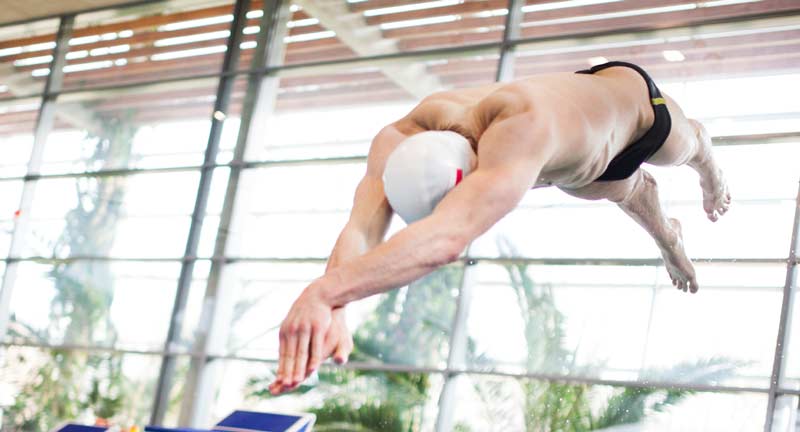
Figure 4. Dive technique can reduce block departure velocity if not practiced, and simple video analysis can show why athletes are losing or gaining speed.
Due to the constraints of gravity and the projection angle of the blocks, there’s hardly any margin for adjustment besides preparing for a streamlined entry. Some research has examined various styles of entry to see how they conserve speed, but none convinces me of a repeatable or adjustable strategy that is coachable. What athletes instinctively do on their own is the majority of the technique, and coaching can only result in small changes.
One interesting study was done in Europe on “air profile” revealed very little information on the advantages or disadvantages of the different techniques. The paper summarized the wrong conclusion because researchers looked at the 15m time, something I made the mistake of looking at instead of seeing the middle underwater transition or earlier benchmark. Another problem is that measuring an effective entry is hard to do with the complications of hydrodynamic calculations. Researchers are left to see entry points and angles and using a chronometer of the video to estimate velocity. I have looked at various speed models. The key element is a dive angled shallow enough to maintain horizontal velocity needs, yet steep enough to prevent loss of momentum due to the surface tension of the water.
The entry for practical purposes is included in the dive since a swimmer can technically be in the water and still be in the air. Instead of creating a very short phase, the dive is completed when the toes are underwater.
Solution: The common practice of diving and gliding (remaining streamlined) for distance is a good start, but one must account for the maximal apex depth to ensure that the rise to the surface is evaluated fairly. Elite swimmers create a rainbow curve from entry to surfacing, and maintaining speed is complicated. One clever option likely not used enough is accelerating the velocity of the pool deck with an approach run, or using a longer and taller dive to expose the athlete to self-organized motor acquisition. Providing the athlete has feedback to that ensure the sensations and self-selected adjustments are working, “aerial athleticism” from coaching can enhance the task-acquired skills even more. While accelerometers are not the end solution for changes in body velocity in swimming, video can help reveal what adjustments are made to create cause and effect.
Innovating the Underwater Transition Phase
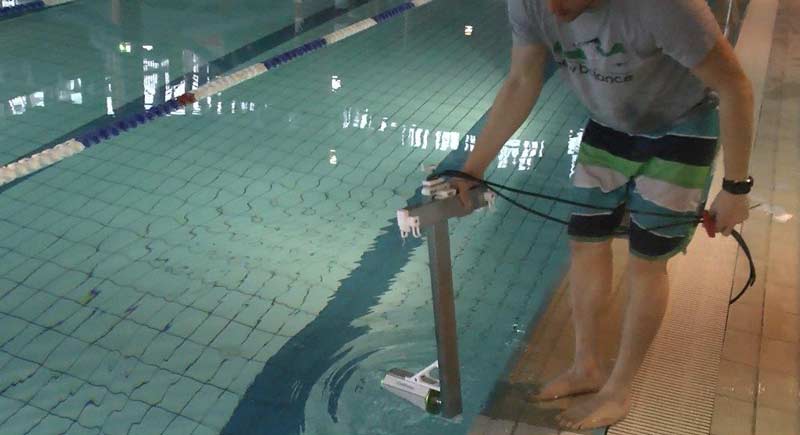
Figure 5. The German company Contemplas is a top option for swimming kinematic data in Europe, and is growing in popularity in the US.
The underwater transition starts when the toe—the last part of the body to enter the water—is submerged. At this point, the entire body speed loss from the dive can’t be changed, since the time loss after entry is limited according to body type and streamlining. What can be changed is the timing of sub-phases by using the speed from the dive more effectively. Major champions have added time from unreliable underwater transitions they never even rehearsed.
While gliding is a period of deceleration, underwater streamlining is still a better option until underwater kicking improves. The difficulty is the swimmer knowing when to start kicking versus holding patient for fractions of a second. Sprinters in track know how to be patient at much higher limb and body velocities, so swimmers have no excuse but to evolve. Also, the faster speed and transition to the first stroke means maximizing the underwater rule limit of 15m.
I believe the shrewdest innovation is polishing the phase between dive and breakout because it’s the one with the hardest coaching demands. I love the idea of navigating to the hardest areas because they are likely uncharted and more inclined to be improved. The focus for ultimate performance in sprint freestyle is to create a series of small benchmarks with underwater video, then try to be more consistent with great rehearsals.
Solution: The most unheralded area of improvement can be done with attention to timing and development of breaking out after the right streamline and kick. The 15m mark needs to be always taken advantage of and has more velocity than the peak swim speed. A fast transition requires looking at decay rates and timing based on maintaining established velocities. Based on the data, taking a stroke or two less will matter, provided all else is equal with regards to conditioning and power.
Innovating the Swim Phase
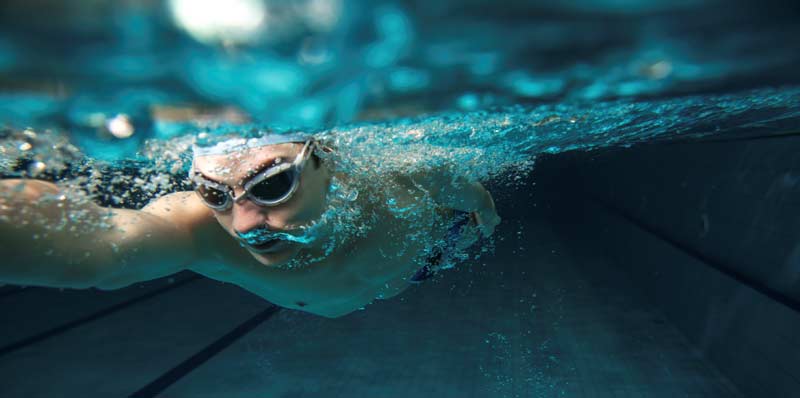
Figure 6. Underwater video is no longer a big expense as technology improves and becomes more affordable. The science of the swimming stroke is still evolving to this day.
Little can be changed here as I see only small refinements in stroke development and evolution. What must be worked on is swimmers’ ability to maintain their rhythm of output. The challenge of swimming, unlike track, is that stroke length and frequency have some merit to performance. In track, stride length and frequency are more an outcome, while swimming is more style-based on skill and talent. While a longer athlete in the pool will likely have longer strokes, their frequency is often a choice of style.
Swimming has changed its rules based on either cheating (breaststroke pullouts) or innovation (underwater kicking). Not much has evolved in freestyle because the very nature and name of the event already opened up the floodgates to innovation. What remains are just refinements of earlier progress to stroke mechanics and power management, but swimmers need to execute their pacing and awareness of fatigue better. I have looked at the results of swimmers in the sprint events. While tapering matters more than in track and field, race execution, for the most part, is far more variable with swimmers.
Solution: Swimmers in short sprints may need either rehearsal work or training that is stroke- and velocity-based rather than interval-based. Like hurdlers, swimmers simply can’t model their events because of the rhythm demands. Hurdlers adjust the height and spacing of the barriers to imprint rhythms they need to execute; swimmers tend to lose out here. Innovation will come from how programs develop consistent racing with data of practices and annual program design records. Coaches must address reducing variability that is unproductive in stroke rhythm and ensures that the fatigue of racing and practicing is congruent. The key metric here is the most economical pattern with conservation of speed from the start and managing the highest mean speed of the swimmers near maximal above-water velocity.
What 50m Swimmers Can Glean from 100m Track Sprinters
Before coaches and athletes in the aquatic world model the 50m, track and field can teach them a lesson or two. Specifically, how the phases of the race evolve and how modern 100m sprinters are better because they are well-rounded. Usually, the event is separated into five distinct phases: start, acceleration, maximal velocity, deceleration zone, and finish. I used the term deceleration zone after peak velocity because the timing of the event is based on rules that the chest is the point of measurement for crossing the line. Sprinters usually dip to get the last fraction of a second, but technically running through the line can eliminate that option.
The reason 50m swimmers can learn from elite sprinters is that the modern 100m athlete is no longer a specialist or gifted in one area, reminding us that the sum of the phases must be carefully balanced instead of just riding talent or skill in one area. Many 50m swimmers are not reaching their potential because they barely address basic areas of the race and remain far from maximized. All the top performances have already been researched, and progress results mainly from suit technology and slight evolutions in strength training.
What’s the Limit or Projection of the 50m Free?
I don’t know what the future holds, but we can still improve the overall speed of the race without resorting to rule changes or going back to the high-tech suit era. Alex Popov achieved his amazing times without a modern suit (and cap!) and used a grab start. We still can learn a lot from his modeling if we rethink little details while trying to increase top speed with an emphasis on hand velocity without increases in drag. We already have some event time projections for Rio, and based on estimates the 50m free world record of 20.91 seems safe.
Note: In 1996 I had a Snooper Cam connected to a VCR, so don’t complain about technology when solutions are cheaper and better now.
Please share so others may benefit.
[mashshare]


The article is very interesting and very helpful. Thanks a lot. My son is 21years young and swims at 24.23 in 50m freestyle and 53.06 in 100m freestyle. He wants to improve his freestyle swimming. Please give us your tips.